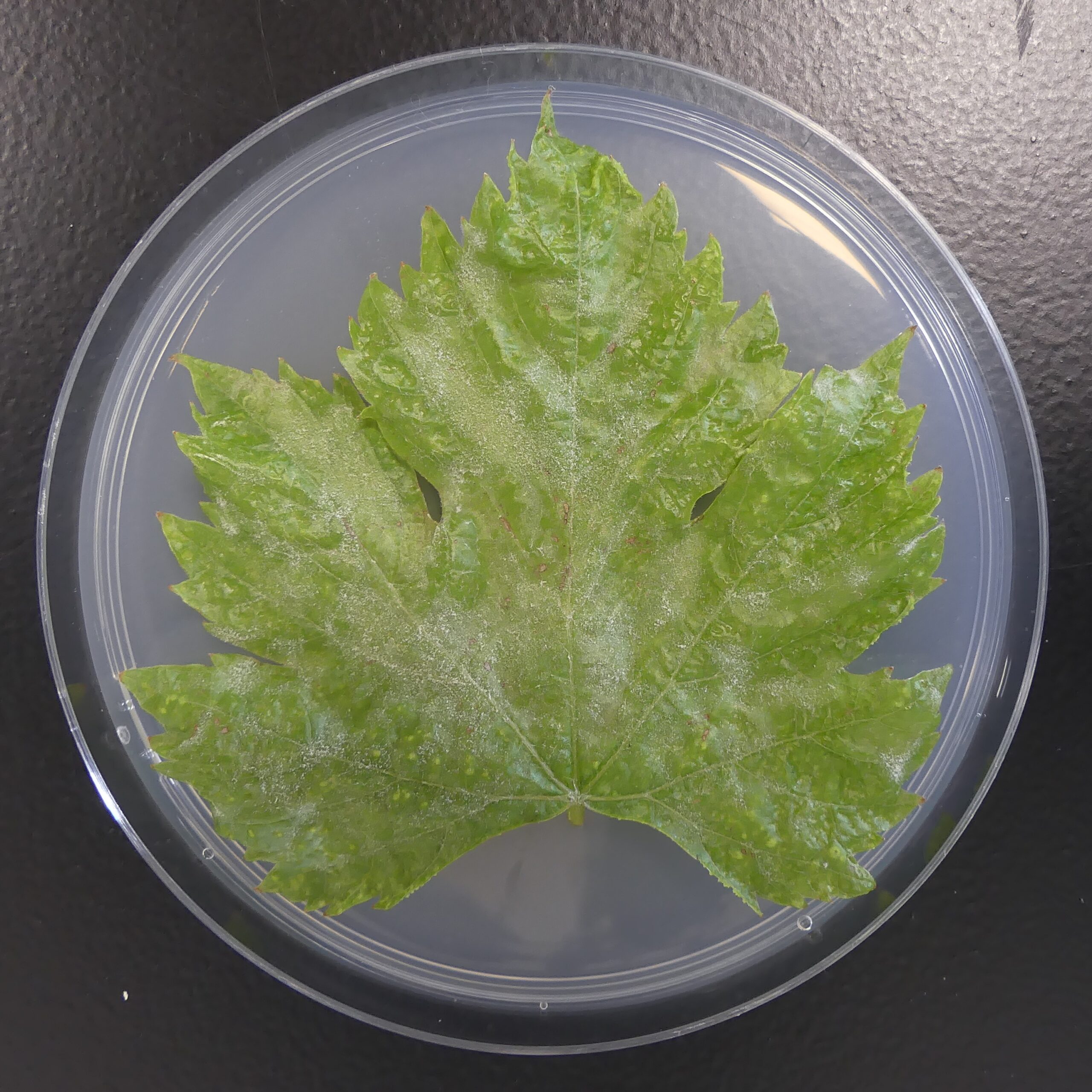What is grapevine powdery mildew ? Description and treatment for a healthy field
Grapevine powdery mildew is a fungal disease caused by the fungus Erysiphe necator.
This disease is one of the most widespread and damaging to grapevines, affecting all the green organs of the plant, including shoots, leaves, shoots, inflorescences and bunches.

Classification and Biology

Grapevine powdery mildew is caused by the fungus Erysiphe necator, a microscopic filamentous ascomycete. This fungus is an obligate parasite, which means it can only survive by infecting host plants, mainly vines of the Vitis genus. It develops on the surface of vine organs, forming a white, powdery mycelium.
Life cycle
The fungus overwinters as mycelium in buds or as cleistothecia on attacked organs.
In spring, cleistothecia burst and release ascospores, which ensure primary contamination. Conidia, produced by conidiophores, are spread by the wind and ensure secondary contamination.
Favorable conditions
Powdery mildew thrives best at temperatures between 25°C and 30°C and relative humidity between 40% and 100%. Unlike other fungal diseases, the presence of free water hinders conidial germination and can even cause them to burst.
Symptoms
Symptoms of powdery mildew vary according to the organs infected:
- Leaves: appearance of oily spots followed by a grayish, dusty felting.
- Young shoots: Growth slows, internodes shorten and leaves stiffen.
- Bunches: Grapes are covered with a gray dust, then burst, revealing the seeds.
-
Trees: Presence of brown to black mycelium before ripening, turning red in a star shape after ripening.
Factors favoring fungus developmen
Powdery mildew develops particularly well in conditions of high relative humidity, both during the vegetative phase and during grape ripening. The fungus’ spores can be transported by wind or water and may also be present on infected plants or transplant material.
Nuisibility
Powdery mildew can cause significant yield losses by reducing the quantity of grapes harvested. It also affects grape quality, leading to abnormal acidity and musty tastes in wines. Some grape varieties are more susceptible than others, such as Carignan, Grenache, Chardonnay and Riesling.
Prevention and control
To prevent powdery mildew, it is essential to maintain good vine aeration and avoid excessively humid conditions. Conventional and non-conventional treatments can be used to control disease. It is also important to monitor the vines regularly to detect the first signs of the disease and intervene quickly.

Our know-how at Conidia Coniphy
In our CONIDIA CONIPHY laboratory, we have developed an early detection kit for this disease (Idetect TM kit). From leaves collected in the field, total DNA is extracted before a qPCR reaction to detect the presence of oidium DNA. Extensive studies over several years have demonstrated the test’s performance, with DNA detected up to 14 days before symptoms appear.
This tool provides essential decision-support information to ensure that treatments are applied at the right time and in a reasoned manner.
Powdery mildew is a high-risk fungal disease that requires proactive management to protect vine health and grape quality.
Our solutions associated with grapevine powdery mildew
idetect
Phytosanitary product testing
Related articles
Interview with Semcheddine Cherrad on Our Innovations in Molecular Biology
Innovations in Phytopathology and NGS: Mapping Plant Pathogen Mutations in Europe
At CONIDIA CONIPHY, we are at the forefront of research in phytopathology through the use of next-generation sequencing (NGS). This revolutionary technology allows us to detect and monitor plant pathogen mutations with unprecedented precision.
Molds, Allergies and Indoor Air Quality: A Crucial Issue for Companies
Let's work together !
If you have any needs or questions about environmental microbiology, contact us and we'll provide you with the answers you need.



